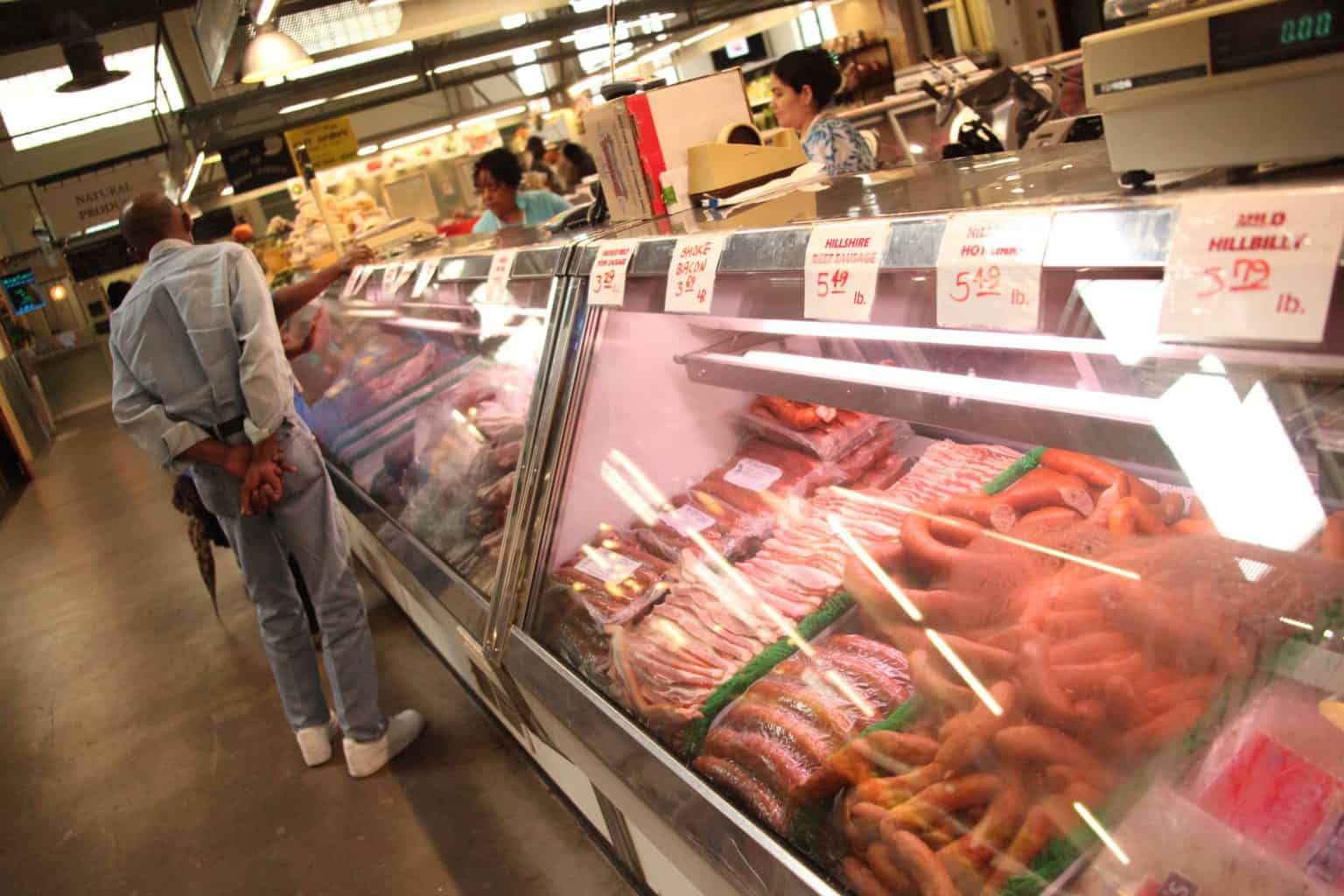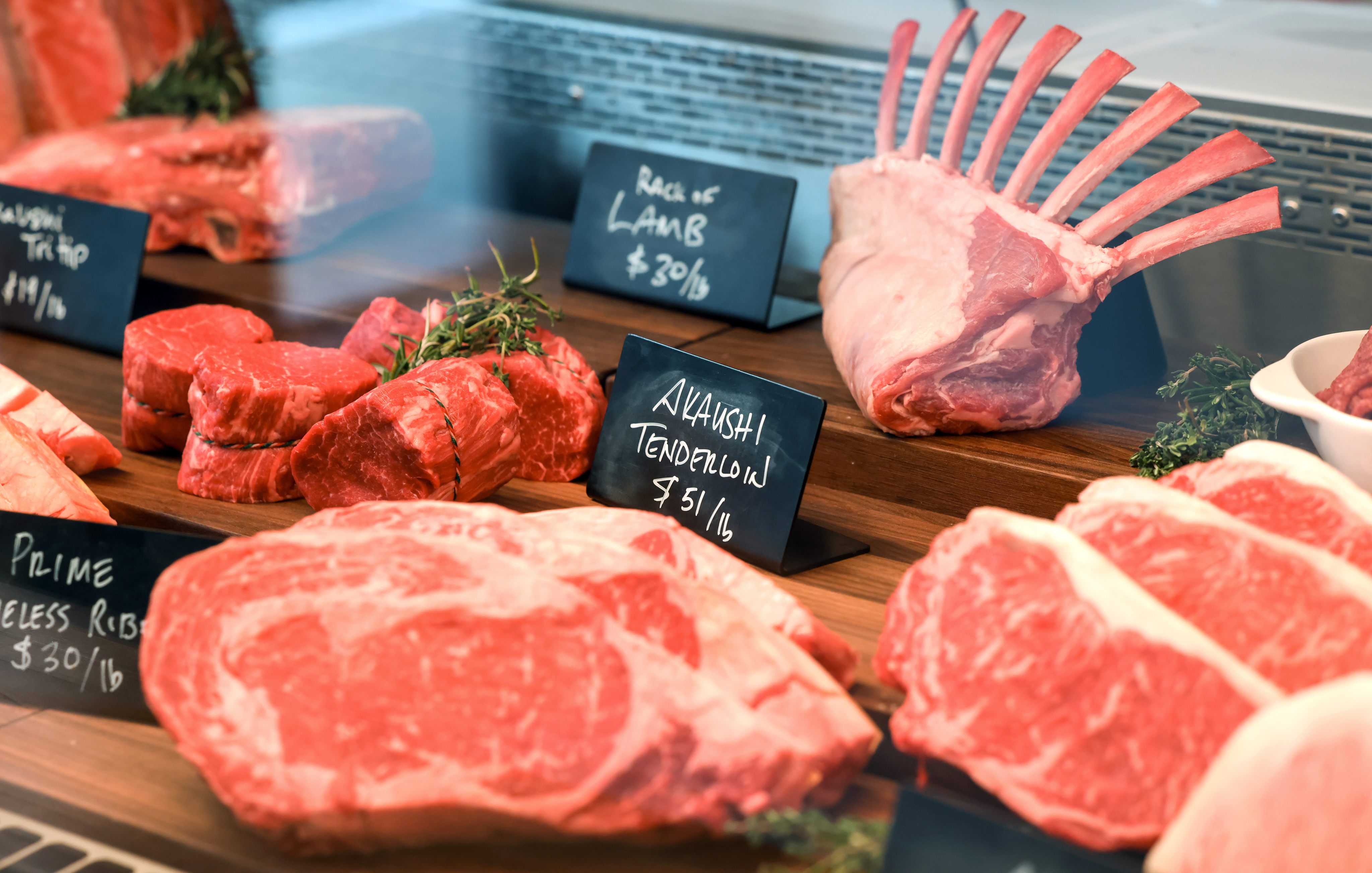Discover fresh, local meats at Bagley Meat Market Edwardsville IL in Edwardsville.
Discover fresh, local meats at Bagley Meat Market Edwardsville IL in Edwardsville.
Blog Article
Just How to Select the Perfect Cut of Meat From a Trusted Meat Market
Picking the perfect cut of meat from a relied on meat market calls for a thoughtful approach that stabilizes top quality, cooking purpose, and budget plan. Recognizing the various kinds of meat and their corresponding cuts is important, as is engaging with your butcher to get understandings right into sourcing and preparation.
Understanding Meat Cuts


As an example, the tenderloin is prized for its buttery structure and marginal connective tissue, making it ideal for quick cooking approaches such as barbecuing or pan-searing. In contrast, harder cuts like the brisket or shank gain from slow-moving cooking strategies to break down collagen, generating rich and delicious results.
Furthermore, the fat content of a cut plays a critical function in taste profile and wetness retention throughout cooking. Cuts with greater fat content, such as ribeye, provide an even more robust flavor, while leaner alternatives, like sirloin, may need mindful preparation to prevent dry skin (bagley meat market edwardsville il). Understanding these subtleties enables notified selections that elevate culinary developments, ensuring that each meal showcases the ideal qualities of the chosen meat
Variables to Consider
When choosing the best cut of meat, several important factors enter play that can dramatically impact the final meal. First and leading, consider the kind of meat you prefer-- beef, pork, lamb, or chicken-- as each deals unique flavors and structures. The specific cut within that category is equally essential; for instance, ribeye provides rich marbling, while tenderloin supplies a lean, buttery structure.
One more element is the cooking technique you prepare to utilize. Cuts appropriate for grilling, such as T-bones or sirloins, differ from those better suited for slow cooking, like chuck roasts or shanks. Additionally, freshness is paramount; constantly pick meat with a vivid color and company appearance, indicating high quality and proper handling.
Costs cuts may supply outstanding taste, yet there are likewise cost-effective alternatives that, when prepared correctly, can produce tasty outcomes. Balancing these variables will aid you select the excellent cut for your culinary demands.
Questions to Ask Your Butcher
A butcher's know-how can be invaluable when choosing the excellent cut of meat for your culinary ventures. Beginning by making inquiries about the source of the meat.
Following, inquire about the different cuts available for the sort of meat you like. A knowledgeable butcher will discuss the nuances of each cut, aiding you pick one that matches your food preparation method and desired outcome. Don't think twice to make inquiries about the very best food preparation methods for a details cut; butchers typically have ideas that can boost your recipe.
It's additionally prudent to inquire about the meat's freshness. Inquire regarding the shipment routine and exactly how usually the meat is replenished. This will certainly offer you self-confidence in the top quality of what you are acquiring. Ask for referrals based on your individual taste preferences. A good butcher will aspire to share their competence and suggest cuts that will delight your taste. Involving your butcher with these concerns can substantially enhance your meat selection experience.
Acknowledging Quality Meat

Appearance is another important aspect; high quality meat must really feel strong and a little springy to the touch. Stay clear of any kind of cuts that feel slimed or exceedingly completely dry, as these can show perishing or improper storage space. In addition, scent plays an important function; fresh meat must have a clean, neutral fragrance, while any off-putting or sour odors are warnings.
Last but not least, take into consideration the resource. Purchasing from a trusted meat market, where the meat's origin is known, can ensure higher top quality criteria. By concentrating on these signs-- color, marbling, texture, scent, and resource-- you can confidently select cuts that will certainly boost your food preparation and dining experience.
Cooking Approaches for every Cut
Choosing the right food preparation technique is vital for optimizing the flavor and tenderness of each cut of meat. Various cuts possess unique features that determine the most ideal cooking techniques.
For tender cuts, such as filet mignon or ribeye, completely dry heat techniques like cooking, broiling, or pan-searing are perfect. These methods boost the natural flavors while making sure a juicy, delicious texture. On the other hand, harder cuts, such this article as chuck or brisket, advantage from moist heat techniques, consisting of braising or slow-moving cooking. These methods assist damage down connective cells, causing a tender, flavorful meal.
Pork chops and hen busts are versatile and can go to this website be cooked using both dry and wet approaches. While grilling or roasting can yield delicious results, poaching or sautéing can maintain wetness and tenderness. For lamb, techniques like roasting or braising are suggested, as they match the meat's robust flavor.

Verdict
To conclude, picking the suitable cut of meat from a respectable meat market necessitates a thorough understanding of meat cuts and you can try here consideration of numerous elements, consisting of source, high quality, and cooking techniques. Involving with the butcher with targeted questions can yield beneficial insights and referrals tailored to certain cooking requirements. Focusing on both quality and spending plan will enhance the total gastronomic experience, ensuring that the selected cut meets assumptions in both taste and preparation.
Report this page